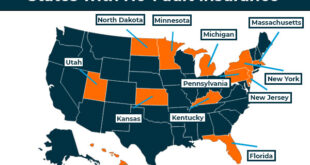Loan for Education: Securing the Best Option Education is an essential investment for a brighter future, but it often comes with a hefty price tag.Whether you’re planning for higher studies or specialized training programs, a loan for education can make your dreams achievable. This guide explores everything you need to know about education loans, from eligibility to tips for securing the best terms.
What Is a Loan for Education?
A loan for education, commonly known as a student loan, is a financial aid program designed to help students cover tuition fees, living expenses, and other educational costs. These loans can be government-funded, private, or a combination of both.
Types of Education Loans
- Federal Student Loans
- Typically offer lower interest rates and more flexible repayment options.
- Private Student Loans
- Provided by banks and credit unions; may require a co-signer.
- Parent Loans
- For parents who want to support their child’s education.
- International Student Loans
- Designed for students studying abroad.
- Loan Forgiveness Programs
- Offered to students in public service sectors or specific careers.
Benefits of Taking a Loan for Education
- Access to quality education regardless of financial constraints.
- Flexible repayment plans tailored to post-graduation income.
- Opportunity to build a good credit history.
How to Apply for an Education Loan
- Research Options
- Compare loans from various lenders, considering interest rates and terms.
- Prepare Documents
- Gather proof of identity, income, academic admission, and any required co-signer details.
- Submit Applications
- Apply through online portals or directly with financial institutions.
- Wait for Approval
- Review the offer carefully and clarify doubts before accepting.
Key Factors to Consider
- Interest Rates: Look for fixed or low-variable rates.
- Repayment Terms: Understand grace periods and penalties for early payments.
- Eligibility Criteria: Check credit score, co-signer requirements, and academic qualifications.
- Loan Amount Limits: Some loans cap the borrowing amount.
Tips for Choosing the Right Loan for Education
- Research thoroughly before committing.
- Choose federal loans when possible due to their favorable terms.
- Avoid borrowing more than necessary to reduce repayment burdens.
- Check for loan forgiveness or repayment assistance programs.
- Use a co-signer with good credit to secure better terms.
- Always read the fine print to avoid hidden fees.
- Maintain a healthy credit score before applying.
- Consider scholarships or grants alongside loans.
- Understand repayment plans, such as income-driven or standard.
- Consult with a financial advisor if needed.
10 FAQs About Loans for Education
- What is the interest rate for education loans?
Interest rates vary by lender and type of loan, ranging from 3% to 15%. - Can I apply for a loan without a co-signer?
Yes, federal loans often don’t require a co-signer, but private loans might. - What is the repayment period for student loans?
Repayment typically ranges from 10 to 30 years, depending on the plan. - Can I use the loan for living expenses?
Yes, many education loans cover accommodation, food, and books. - Are education loans available for online courses?
Some lenders provide loans for accredited online programs. - How do I qualify for loan forgiveness?
By working in public service or specific fields for a set number of years. - What happens if I can’t repay on time?
Missed payments can harm your credit score and lead to legal action. - Are there prepayment penalties?
Some private loans may charge a fee for early repayment. - Can international students get education loans?
Yes, but they often need a U.S.-based co-signer. - How long does the loan approval process take?
Approval can take a few days to several weeks.
Conclusion
Education loans play a vital role in bridging financial gaps, empowering students to pursue their goals without compromise. By understanding the terms, exploring options, and leveraging smart financial strategies, you can secure an education loan tailored to your needs.
Investing in education is a decision that pays dividends for a lifetime. Plan wisely, borrow responsibly, and use your education as a stepping stone toward a successful future.
 Gerbang Finance
Gerbang Finance

